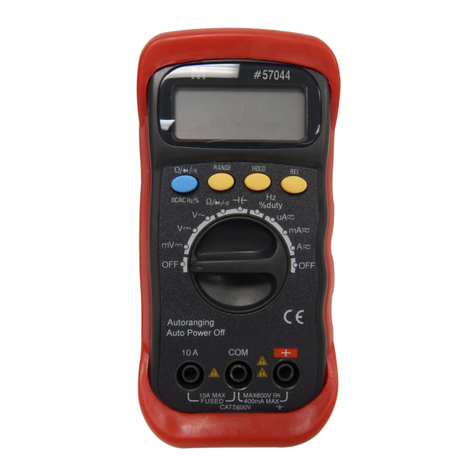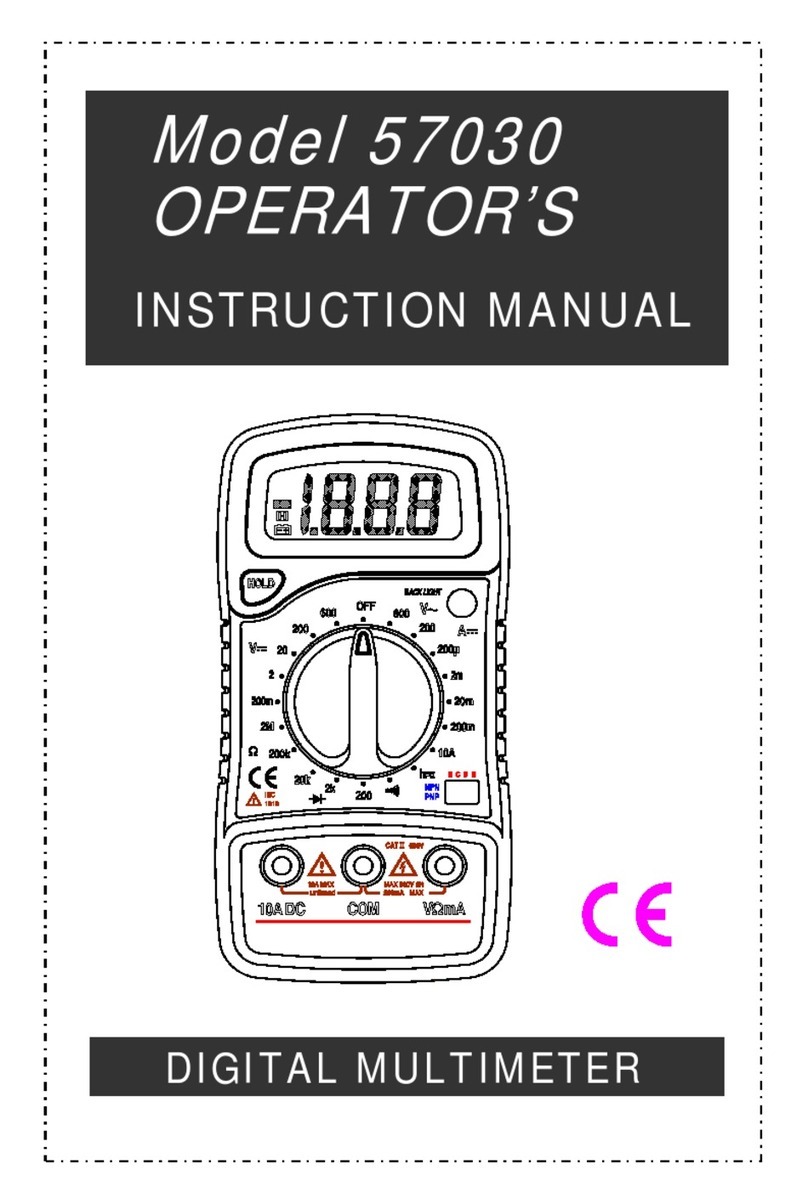- When the value scale to be measured is unknown beforehand, set
the range selector at the highest position.
- Do not measure voltage if the voltage on the terminals exceeds
1000V above earth ground.
- Always be careful when working with voltages above 60V DC or 30V
AC rms, keep fingers behind the probe barriers while measuring.
- Before rotating the transform switch to change functions and ranges,
disconnect test leads from the circuit under test.
- Never perform resistance, transistor and diode measurements on live
circuits.
- Never use the meter under the condition of the explosive air, steam
or dirt.
- If any faults or abnormalities are observed, the meter cannot be used
any more and it has to be checked out.
- Never use the meter unless the rear case is in place and fastened
fully.
- Please do not store or use meter in areas exposed to direct sunlight,
high temperature, humidity or condensation.
●SYMBOLS
Important safety information, refer to the operating manual.
Double insulation(Protection classΙΙ).
CAT ΙΙ Overvoltage (Installation) category II, Pollution Degree 2 per
IEC1010-1 refers to the level of Impulse Withstand Voltage
protection provided.
CAT ΙΙΙ Overvoltage (Installation) category III, Pollution Degree 2 per
IEC1010-1 refers to the level of Impulse Withstand Voltage
protection provided.
High voltage warning symbol
Conforms to european union directive
Earth ground
Fuse
- 2 -
~Alternating current
Direct current
Diode
H This indicates that the display data is being held.
The battery is not sufficient for proper operation.
●MAINTENANCE
-Please do not attempt to adjust or repair the meter by removing the
rear case while voltage is being applied. A technician who fully
understands the danger involved should only carry out such actions.
- Before opening the battery cover or case of the meter, always
disconnect test leads from all tested circuits.
- To avoid the misreadings, when the meter displays“ ”, you must
change the battery.
- For continued protection against fire, replace fuse only with the
specified voltage and current ratings: F 200mA/250V (quick acting).
- Do not use abrasives or solvents on the meter; use a damp cloth and
mild detergent only.
- Always set the power switch to the OFF position when the meter is
not in use.
- If the meter is to be stored for a long period of time, the batteries
should be removed to prevent damage to the unit.
DESCRIPTION
- This meter is a portable professional measuring instrument with a
handsome LCD for easy reading.
- Single operation of the transform switch makes measurement
convenient. Overload protection and low battery indication are
provided. This meter is ideal for use in the fields, workshop, school,
hobby and home applications.
- This meter includes the data hold function.
- 3 -


























